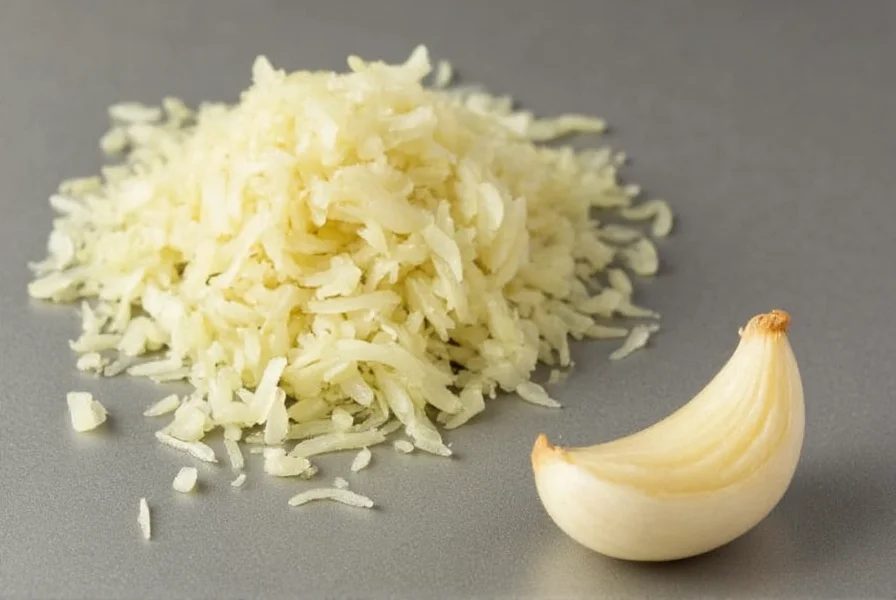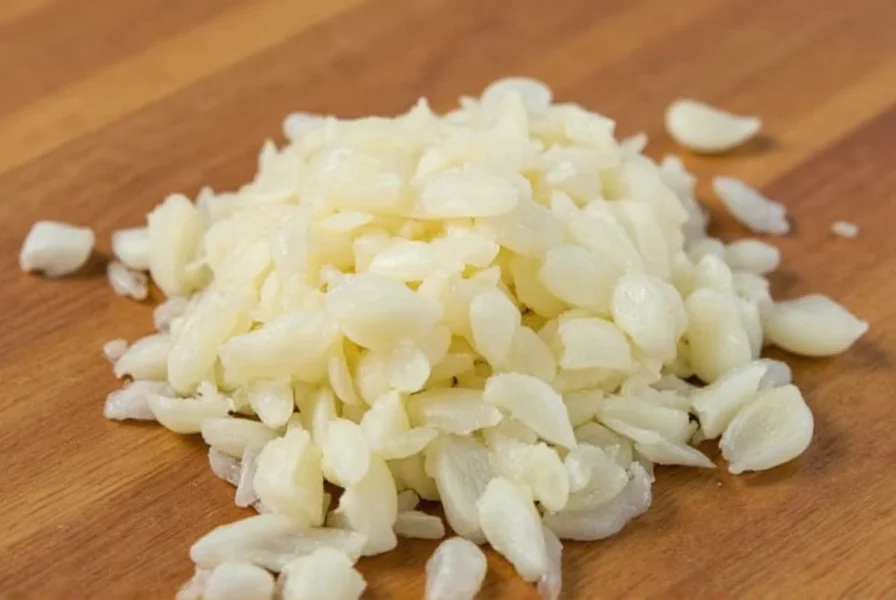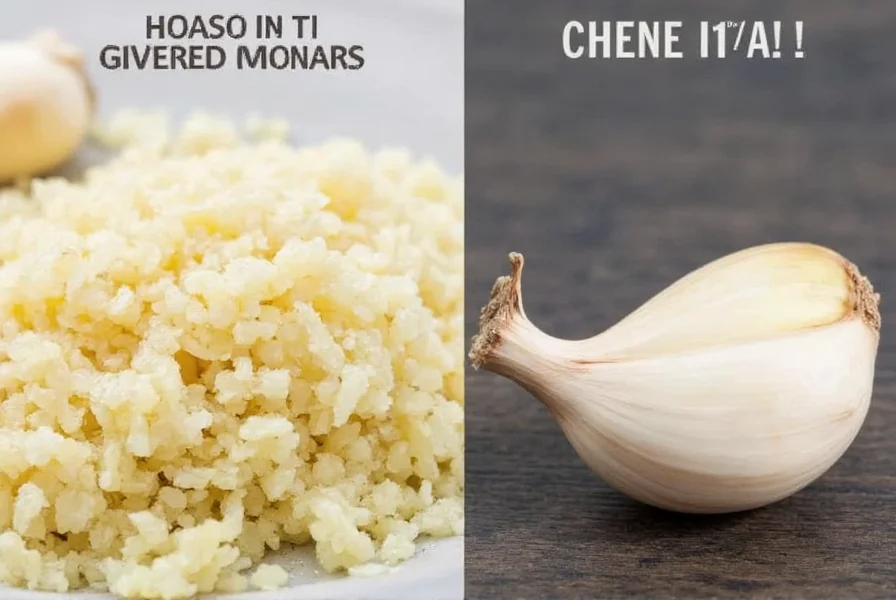When following recipes that specify minced garlic but you're working with whole cloves, knowing the exact conversion prevents flavor imbalances in your dishes. Professional chefs and home cooks alike need this fundamental kitchen measurement knowledge to maintain recipe integrity.
Understanding Garlic Conversions for Perfect Cooking Results
Garlic measurements can make or break your culinary creations. The standard conversion—one medium garlic clove equals 1/2 teaspoon minced garlic—serves as your baseline for most recipes. However, garlic cloves vary significantly in size, which affects your final measurement.
Small cloves typically yield about 1/4 teaspoon minced, while large cloves can produce up to 3/4 teaspoon. This variation explains why experienced cooks often rely on taste rather than strict measurements when working with garlic.
| Garlic Clove Size | Minced Garlic Equivalent | Teaspoons | Tablespoons |
|---|---|---|---|
| Small | 1 clove | 1/4 tsp | 1/12 tbsp |
| Medium (standard) | 1 clove | 1/2 tsp | 1/6 tbsp |
| Large | 1 clove | 3/4 tsp | 1/4 tbsp |
| Extra Large | 1 clove | 1 tsp | 1/3 tbsp |

Factors Affecting Garlic Measurement Accuracy
Several variables influence your minced garlic conversion:
- Clove size - Garlic bulbs contain cloves of varying sizes
- Mincing technique - Hand-minced versus food processor results differ
- Packing density - How tightly you pack the minced garlic into measuring spoons
- Moisture content - Freshness affects volume after mincing
For recipes where garlic plays a starring role—like aioli, pesto, or garlic bread—consider tasting as you go. The how much minced garlic per clove question has a standard answer, but culinary artistry often requires adjustments based on your specific ingredients and preferences.
Practical Applications in Everyday Cooking
Understanding the garlic clove to minced garlic conversion proves invaluable when:
- Following recipes that specify measurements rather than whole cloves
- Using pre-minced garlic from jars when a recipe calls for fresh
- Scaling recipes up or down for different serving sizes
- Substituting garlic powder or granulated garlic
When precision matters most—such as in delicate sauces or baking—use the conversion chart above. For heartier dishes like stews or roasts, approximate measurements typically suffice. Remember that roasted garlic yields slightly less volume than raw when minced due to moisture loss during cooking.

Storage Tips for Minced Garlic
Knowing your minced garlic equivalent becomes particularly useful when storing prepared garlic. Freshly minced garlic:
- Lasts 5-7 days refrigerated in an airtight container
- Can be frozen in ice cube trays for longer storage
- Loses potency faster than whole cloves
- Develops stronger flavor over time when stored
When using stored minced garlic, you might need slightly less than fresh because its flavor intensifies during storage. This garlic measurement conversion knowledge helps maintain consistent results across cooking sessions.
When Approximation Works and When Precision Matters
Not every dish requires exact how many teaspoons minced garlic per clove calculations. Understanding when to measure precisely versus when to estimate comes with kitchen experience.
For most savory dishes, a slight variation won't ruin your meal. However, when making garlic-infused oils, aioli, or dishes where garlic is the primary flavor component, precise measurements ensure consistent results. Baking recipes that incorporate garlic (like breads or crackers) also benefit from accurate measurements.
The next time you wonder how much minced garlic equals a clove, remember the 1:1/2 ratio as your starting point, then adjust based on your specific cloves and recipe requirements. This fundamental kitchen knowledge transforms confusing recipe instructions into clear, actionable steps for better cooking results.
How much jarred minced garlic equals one fresh clove?
One teaspoon of jarred minced garlic typically equals one medium fresh garlic clove. Jarred versions often contain preservatives that affect potency, so you may need slightly more for equivalent flavor.
Does roasting garlic change the minced measurement?
Yes, roasted garlic yields about 20% less volume when minced compared to raw garlic due to moisture loss during roasting. Adjust measurements accordingly if precision matters for your recipe.
Can I substitute garlic powder for minced garlic?
Yes, use 1/8 teaspoon garlic powder to replace 1/2 teaspoon minced garlic (one clove). Garlic powder is more concentrated, so start with less and adjust to taste.
Why does my minced garlic measurement vary from recipe to recipe?
Garlic clove sizes vary significantly between bulbs and seasons. Recipes often assume medium cloves, but your actual cloves might be smaller or larger, affecting the minced volume.
How do I measure minced garlic accurately?
For precise measurement, lightly pack minced garlic into measuring spoons without compressing it. Level off excess with a straight edge for consistent results, especially important in baking and delicate sauces.











 浙公网安备
33010002000092号
浙公网安备
33010002000092号 浙B2-20120091-4
浙B2-20120091-4